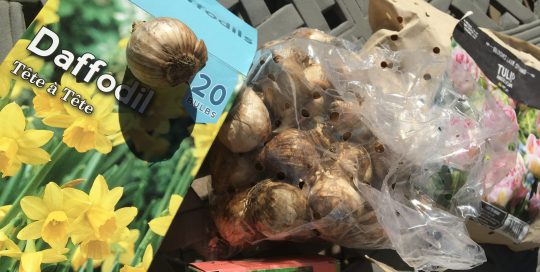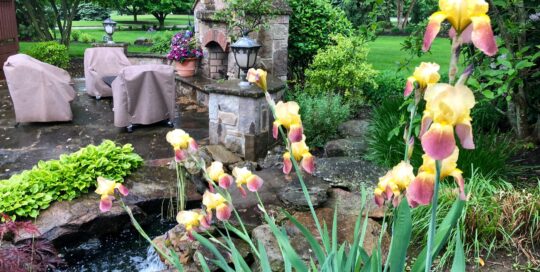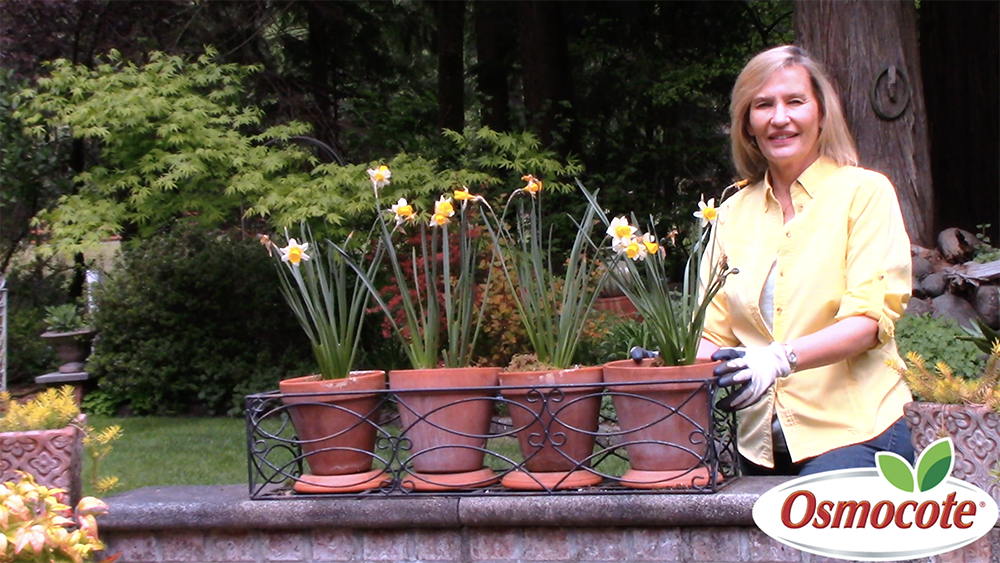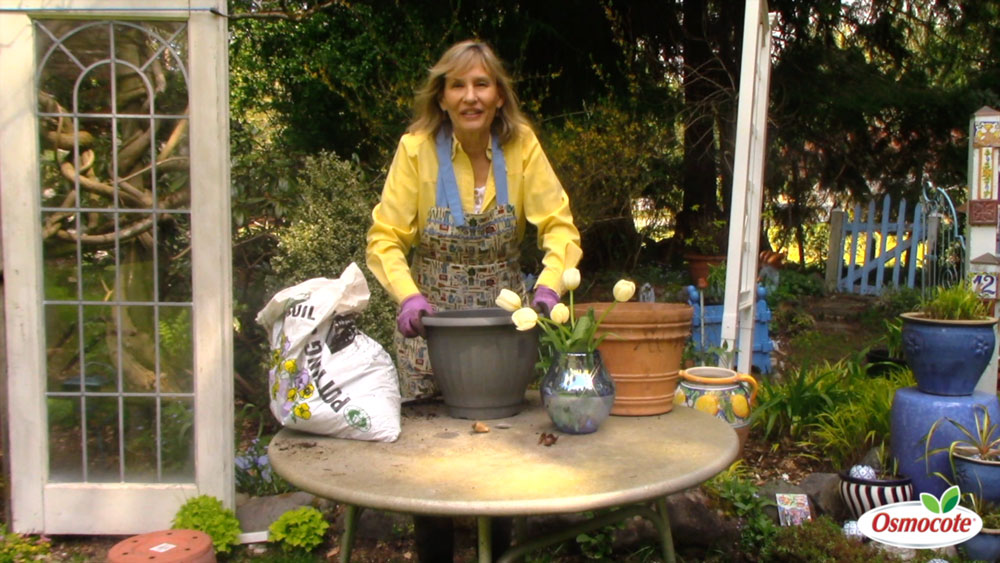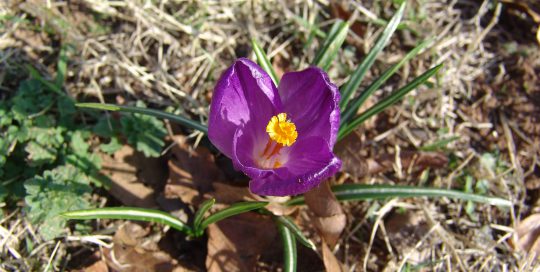Forcing Bulbs
By Kate Copsey
Planting the Bulbs:
Planting the bulbs in a container is just like planting in the ground as regards depth to plant. Depending on the bulb, this could be as deep as 4-6 inches for daffodils. Early, little daffodils only need a few inches of depth so work well in shallow dishes. Use fresh container mix from the store or from your garage. In very cold areas, make sure that your bag of container mix has been put into the garage or other frost-free area before winter chill freezes it.
Remove the bulbs from cold storage and put a layer of container mix at the base of the container. Put the bulbs in an attractive pattern on the mix, then cover with more container mix. Water the bulbs well and place in a cool, light area to break dormancy. A bowl of dormant bulbs under the soil is not an attractive addition to the dining table, so keep the bulbs arrangement in a cool bedroom or utility area until they are almost in bloom.
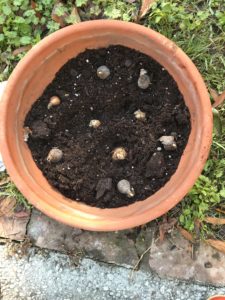
Growing the Bulbs:
Once planted, the bulbs should break dormancy in just a few weeks and start to grow. Keep the bulbs moist but not wet and make sure your container has adequate drainage so that the bulbs do not rot. Make sure to feed with plant food. Once the bulbs are growing, they need the same full sun as outside such as a sunny windowsill. The best growing temperature for bulbs is similar to great spring weather i.e. around 60⁰f . Once the flower has set and the bloom is coming out, a warmer room is fine.
Layering Bulbs for a Longer Display:
Bulbs for layering in containers can be forced indoors or left outside in a container for you to look at. The premise for the display is that smaller bulbs, like crocus, break dormancy before larger daffodils and by planting the bulbs at different depths, all together, the will bloom at different times giving a long display.
To start the display: The container should be wide enough to hold about a dozen bulbs and deep enough to bury the bulbs. Fill the container to about 1/3 its depth. Assemble your bulbs and divide into early mid and late blooming. The bulbs can be mixed up but generally the smaller, early bulbs are planted toward the outside of the container, while the larger, later bulbs fill the center. This way the taller bulb growth does not block the beauty of the smaller bulbs already in bloom.
Put the larger bulbs in the container first. Cover with 2-3 inches (6-8cm) of container mix and plant the next, mid-season bulbs. Next, cover these again and plant the early bulbs. Finally, cover with a final layer of mix. You should now have the larger bulbs 3-6 inches (10-15cm) down. Next layer at about 3-4 inches (8-10cm) down. The final layer just 2-3 inches(6-8cm) down. If this is done outside where the container will grow, you are finished – nature will take care of the watering and the chilling so that your bulbs will break dormancy on the usual schedule. For indoor containers, take the container into a cool but light room until the first bulbs start to show a flower forming. Although these containers are generally too big for a table, they do work well in double story lobbies and 4-season rooms.

